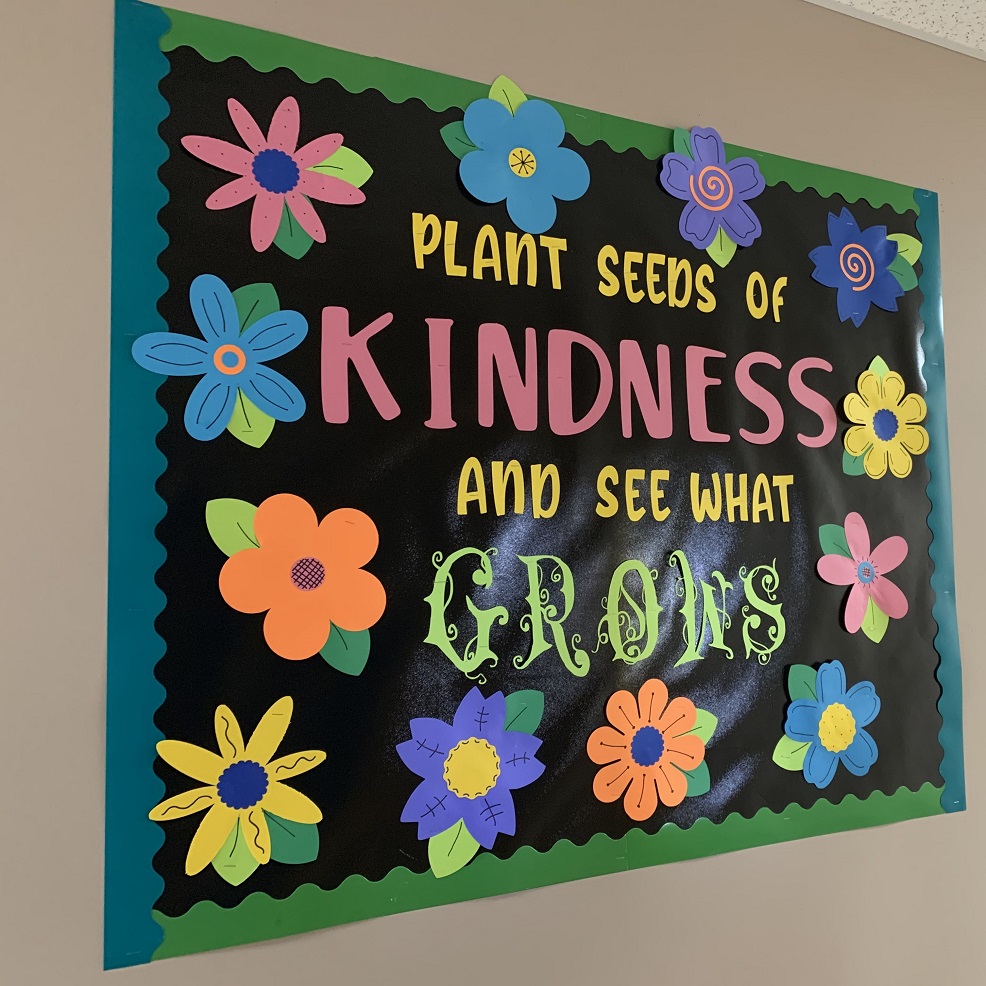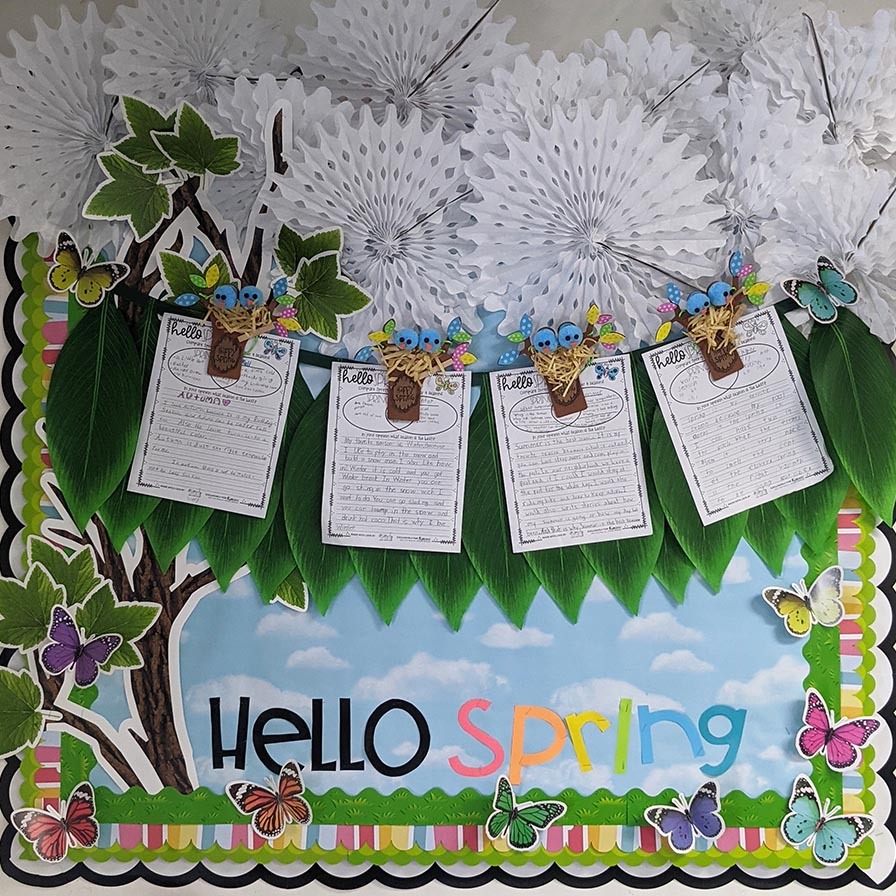Introduciton
Spring is a wonderful time of year for teachers and students alike. The flowers bloom, the sun shines, and everything feels fresh and new. As an elementary teacher, you can capture this vibrancy on your bulletin boards. A well-decorated bulletin board not only enhances the classroom environment but also engages students and stimulates their creativity. Here, we will explore several elementary spring bulletin board ideas that can help you celebrate the season while educating your students.
Thematic Bulletin Boards for Spring
Flower Power: A Garden of Learning
A flower-themed bulletin board can serve as a beautiful representation of spring. Start by covering the board with light green or blue paper to mimic grass or sky. Create large flowers from colorful paper. Each flower can represent a different subject or thematic area. For instance, a pink flower could symbolize reading, while a yellow flower could represent math.
You could also involve your students in making these flowers. A flower-making session can be both fun and educational. Each student can create their version of a flower. They can write their name and favorite subject on it. This decor not only looks nice but also personalizes your bulletin board.
To add an educational twist, you can write interesting facts about flowers on visible parts of the board. For example, you could add information about the different types of flowers, their habitats, and their importance in the ecosystem. This will not only beautify your classroom but also offer learning opportunities.
Rainbow of Emotions: Understanding Feelings
Spring brings colorful flowers and sunshine. It can also be a time for students to explore their emotions. A bulletin board themed around a rainbow can be a perfect way to teach emotional intelligence. Use paper in different colors to create a large rainbow that spans the entire board.
You could assign each color a different emotion. For example, red can stand for anger, yellow for happiness, blue for sadness, and green for calm. Students can be tasked with drawing or writing examples of when they have felt these emotions. This board can serve as a reference for emotional discussions in class.
Encourage students to create feeling faces that represent each emotion. You can display these next to the rainbow. This will not only make the board visually engaging but will also promote deeper conversations about feelings and self-awareness among students.
Creative Ways to Celebrate Earth Day
A Nature Collage: Celebrating Earth’s Beauty
Earth Day falls in April, making it a great time to switch up your bulletin board with an environmental theme. A nature collage is an excellent way to celebrate Earth’s beauty while teaching students about conservation. Start with a big piece of brown paper to represent the earth.
Students can collect leaves, flowers, and even small twigs from their surroundings. Have them arrange these on the board to create a vibrant collage of nature. Every piece collected can represent a different lesson on the ecosystem, such as photosynthesis, animal habitats, or recycling.
To deepen the educational aspect, you can have students write facts or short paragraphs about what they learned about nature. This can be displayed around the collage. For example, one student might write about how trees help purify the air, while another shares the importance of bees in pollination. This board can serve as a focal point for discussions about environmental responsibility.
Butterfly Lifecycle: A Visual Learning Tool
Butterflies are a popular symbol of spring. They undergo a fascinating metamorphosis. This can be an excellent theme for a bulletin board that teaches about life cycles. Start with a large bulletin board paper colored in soft blue to imitate the sky.
Create different sections for each stage of the butterfly life cycle: egg, larva (caterpillar), pupa (chrysalis), and adult butterfly. Use vibrant colors for each stage. For instance, caterpillars can be made from green or yellow paper, and butterflies can be colorful and dazzling.
In each section, include facts about that stage. For example, write down how long each stage lasts and what changes occur. You can also include images or drawings that students create. This board not only beautifies your classroom but also educates your students effectively.
Interactive Bulletin Boards
Spring Reading Challenge: Cultivating a Love for Books
Encouraging students to read is essential, especially in elementary school. An interactive spring reading challenge bulletin board can engage students and promote literacy. Use bright colors for the background and create a giant tree with branches extending into various areas of the board.
Each branch can represent a different genre. For example, fantasy, mystery, and non-fiction could each have their own branch. Students can add leaves with the titles of books they have read. As they read more, they can add leaves to the tree.
To make this more interactive, set a goal for how many books you’d like to read as a class. As the class reaches milestones, you can add decorations such as flowers or butterflies to the tree. This will not only make the board lively but also instill a sense of achievement in your students.
Spring Math Garden: Making Math Fun
Another interactive idea is to create a Spring Math Garden. Use bright colors to display flowers and vegetables made from construction paper. Each flower can represent a different math problem or challenge that students need to solve.
For example, a red flower can pose an addition problem, while a purple flower can feature a subtraction problem. Encourage students to work in pairs or small groups to solve these problems. Once they solve a problem, they can write their answers on a sticky note and attach them to the respective flower.
This board can serve as a daily challenge. You can rotate the math problems every week to keep students engaged. Over time, it can turn into a competitive yet friendly atmosphere, motivating students to improve their math skills.
Themes Related to Friendship and Kindness
Kindness Blossoms: A Board of Good Deeds
Kindness is an essential value to instill in elementary students. A “Kindness Blossoms” bulletin board can serve as a constant reminder of this important virtue. Start with a bright background and create large flower shapes. Each petal can represent an act of kindness.
Encourage students to write down their acts of kindness on flowers. Examples of these acts could range from sharing their lunch with a friend to helping a classmate with homework. As more students contribute their acts, the board will fill up with vibrant flowers.
Display this board prominently for all to see. This not only beautifies the classroom but also promotes a culture of kindness. It encourages students to think about their behaviors and inspires others to act kindly too.
Friendship Trees: Celebrating Connections
Spring is a time for new beginnings, and it’s also a great moment to celebrate friendships. A “Friendship Tree” bulletin board can help students appreciate their peers. Start with a large tree outline on the board and leave the branches empty.
Students can each receive a paper apple or leaf. On it, they can write the name of a friend and something they like about them. Attach these apples or leaves to the branches of the tree. This can serve as a beautiful visual representation of the friendships and connections formed in your classroom.
Encourage discussions about the importance of friendship and teamwork. This can lead to lessons on collaboration and working together. This board can continually evolve as new friendships form, making it a beautiful ongoing project for the school year.
Seasonal Changes and Science
Seasons Change: Understanding the Science of Spring
Spring is not just about appearances; it is also a time to teach students about seasonal changes. A “Seasons Change” bulletin board can serve as an educational tool. Divide the board into four sections, each representing a different season.
For the spring section, use vibrant colors and images that symbolize the season. Students can contribute by providing facts about spring, such as the types of flowers blooming, the length of days, and animal behaviors during spring.
This board can also include a science project element. Have students monitor daily temperatures, rainfall, or other seasonal phenomena. They can write their observations and display them on the board. This can inspire scientific thinking and observation skills among the classroom.
Weather Wonders: Exploring Spring Weather Phenomena
Spring is known for unpredictable weather. Use this to your advantage with a “Weather Wonders” bulletin board. Create different weather symbols such as clouds, raindrops, and sunrays. These can be placed on a blue background to represent the sky.
Each weather symbol can be accompanied by information about that weather type. For instance, instead of just presenting the sun, explain the concept of sunshine, its role in photosynthesis, and how it affects climate.
Students can also contribute their weather observations. They can draw or write about different weather days or even keep a class weather log. This can make learning tangible and fun while also improving their understanding of meteorological concepts.
Conclusion: Bringing Spring to Life
Spring is a vibrant season full of opportunities for learning and creativity. Using bulletin boards to reflect this energy not only beautifies the classroom but also engages students in various educational themes. From kindness and friendship to science and mathematics, there are endless possibilities. Don’t hesitate to let your imagination run wild and get your students involved. A well-decorated bulletin board can become a focal point in your classroom and a source of pride for both you and your students. Remember, creating a positive learning environment is essential for fostering creativity and critical thinking. Happy spring decorating!



